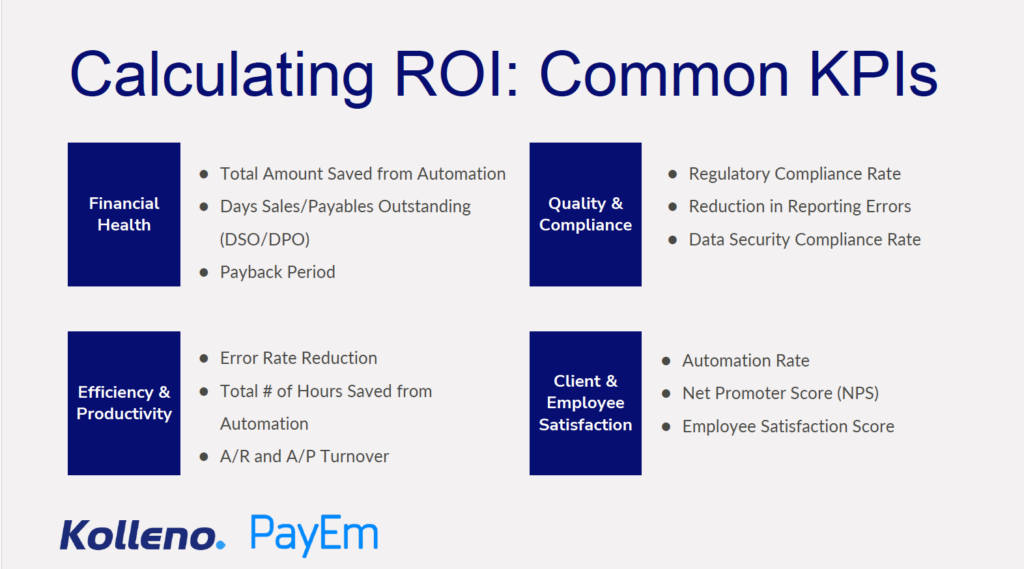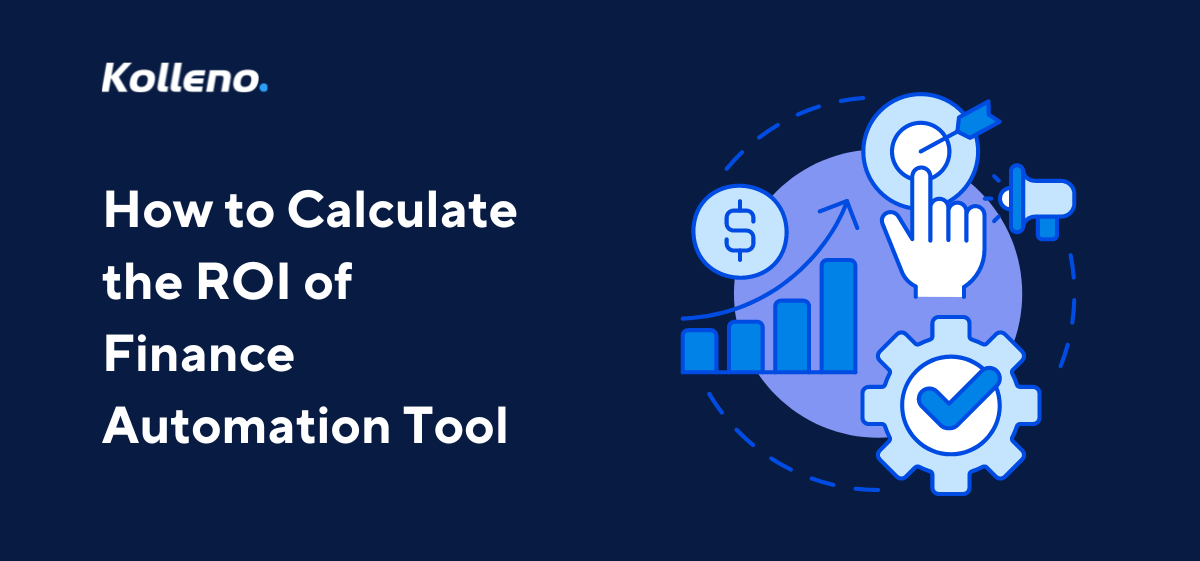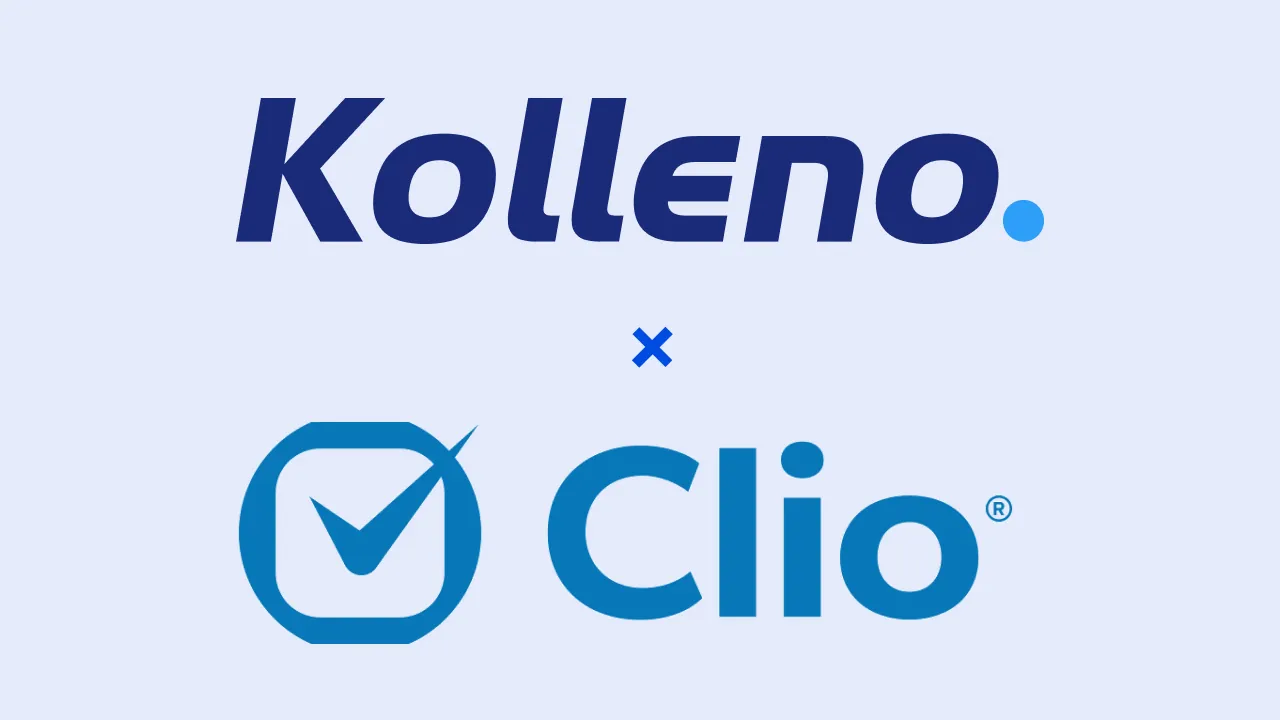Finance automation promises significant efficiency gains and enhanced business operations, but how do you quantify its true value? This guide simplifies the process of calculating your investment’s return on investment (ROI), ensuring you understand the worth and impact of automating your financial processes.
In This Article
- What Does Finance Automation Mean?
- Calculating the ROI of Finance Automation
- Leverage Tools and Metrics to Measure the ROI
- Conclusion
What Does Finance Automation Mean?
In an era where business efficiency is synonymous with technology adoption, financial automation stands out as a transformative force for businesses of all sizes. But what does it practically mean for a business?
By using automation technology to automate time-consuming, error-prone, and repetitive processes, finance teams can easily simplify and streamline their key finance operations, such as billing, accounts receivable & payable, month-quarter-year-end close reconciliation, procurement, financial planning and analysis (FP&A). This not only enhances accuracy but also boosts overall efficiency within the finance department and parts of the business.

Calculating the ROI of Finance Automation
First, we start by breaking down the costs and financial benefits of finance automation.
Initial Costs: Understanding ROI starts with a clear view of the upfront costs. This is not just about buying software. It is about pricing every related expense, from system integration and training to potential upgrades needed to ensure everything works seamlessly together. This step sets the foundation for understanding the total cost and financial commitment required for automation solutions.
Identify the Returns: Next, it is essential to pinpoint what you stand to gain and understand both the immediate and long-term benefits like speeding up operations, reducing human error, and freeing up your team to tackle more strategic tasks.
- Short-term Direct Gains: How quickly does the system start paying for itself? Automation can dramatically reduce manual processes in financial operations, leading to direct savings in time and labor costs. Enhanced speed and reduced errors in processes like invoice processing translate into operational efficiencies that are easy to quantify and reflect in your bottom line. Assessing short-term financial gains like immediate cost savings or efficiency boosts helps justify the initial investment.
- Long-term Strategic Advantages: Look beyond the immediate and consider the benefits over a greater amount of time. Some of the biggest wins from automation are not easily quantified but are vital. These include more informed strategic decisions due to better data accessibility and the agility to adapt to new business opportunities or challenges quickly. Improved accuracy, better compliance, enhanced employee satisfaction—all these contribute to a healthier, more dynamic business environment.
Leverage Tools and Metrics to Measure the ROI
Implement and monitor metrics closely: Calculating ROI is not just about numbers; it requires evaluating both clear-cut gains and less tangible benefits. Start by assessing measurable outcomes such as cost reductions and increased efficiency by comparing financial performance before and after implementing automation. Metrics, like decreased Days Sales Outstanding (DSO) for accounts receivable automation or improved payables turnover, provide concrete evidence of success.

However, capturing the full spectrum of benefits means also considering intangible improvements—such as employee satisfaction and customer satisfaction—which can significantly impact your business. These are typically harder to quantify, but tools like employee satisfaction surveys and customer feedback offer valuable insights into these areas, allowing you to gauge the broader effects of your investments in technology.
Webinar slides
Download the slides from the webinar to learn more about different KPIs used to measure the ROI of finance automation
Use the Right Tools: To measure the ROI effectively, utilize resources that can analyze and present data clearly, such as ROI calculators, data analytics software, and industry reports to support your calculations. These tools can provide deeper insights into how automation impacts your financial health and operational efficiency and compare pre-automation and post-automation performance results to see the evidence of automation success in action.
Learn how to calculate the ROI of finance automation for enhanced operations.
Conclusion
In conclusion, understanding the ROI of finance automation involves a clear approach that spans economic, operational, and strategic dimensions. By carefully assessing all benefits and costs, organizations can make well-informed decisions about their investments in automation technologies, ensuring these tools deliver value that far exceeds their cost.
Utilizing automation software and automation systems can streamline workflows, reduce operational costs, and improve cash flow, ultimately enhancing profitability. Initiatives in automation projects and process automation are crucial for achieving substantial financial gains and operational efficiency.
Moreover, engaging stakeholders through webinars and case studies can further illustrate the ROI formula and investment cost, guiding the CFO and other decision-makers in making strategic decisions.
Would you like to learn more? For more comprehensive insights and real-world applications discussed by industry experts, watch our on-demand webinar produced with PayEm, available for free below:
About PayEm
PayEm revolutionises spend management with a user-centric approach. The platform offers customised employee request forms, dynamic approval workflows, budget control for informed decision-making, and AI-powered invoice processing, simplifying finances and promoting accountability.
About Kolleno
Kolleno is an all-in-one AR management platform. It offers a comprehensive suite of tools to automate invoice tracking, payment reminders, and collections, making it easier for businesses to manage their cash flow. Founded with the mission to help businesses get paid faster, Kolleno leverages the latest and most advanced technology, including AI and machine learning, to bring efficiency to AR management.
AR Automation Benefits Analysis spreadsheet
Download the Excel template that will help you to calculate your potential ROI of Finance Automation











